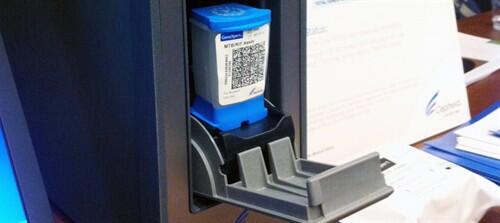
Experts at LSTM have used a novel modelling approach to project the effects of new diagnostic methods and algorithms for the diagnosis of tuberculosis (TB) recently endorsed by the World Health Organization (WHO), looking at the patient, health system and population perspective in Tanzania.
In a paper published in the journal The Lancet Global Health, LSTM’s Ivor Langley and Professor Bertie Squire worked with colleagues from the Institute of Epidemiology and Preventative Medicine, National Taiwan University; National Tuberculosis and leprosy Programme, Tanzania; Department of Epidemiology, Harvard School of Public Health and Brigham and Women’s hospital, Boston, MA., using an integrated model to assess the effects of a number different algorithms in order to assist national TB programmes who now face a decision about which methods to implement. The model was designed to represent the operational and epidemiological context of Tanzania and was used to compare the effects and cost-effectiveness of different diagnostic options.
At its heart, the study projected, over a 10 year time frame, three parameters which are critical in health policy decision-making: cost per additional disability-adjusted life-years (DALYs) averted, total DALYs averted, and total health budget. The modelling permitted projection of all three of these parameters for a number of different diagnostic algorithms. The team identified three algorithms as cost-effective in Tanzania, where in 2011 the incidence of TB was 169 per 100,000 with 38% of patients co-infected with HIV.
The algorithm with the greatest cost-effectiveness deployed Xpert MTB/RIF for all presumed TB cases. This is a cartridge based automated diagnostic test that can identify Mycobacterium tuberculosis (MTB) with improved accuracy as well as detect resistance to rifampicin (RIF). Although this algorithm was also below Tanzania’s willingness to pay threshold of USD 599 (GDP per head) per DALY, it would cost USD 36 million to implement. This would require Tanzania to mobilise a 25% increase in its total budget for TB control. The next most cost effective algorithm deployed same-day LED fluorescence microscopy for all presumed TB cases. Although the population level effect was less than Xpert MTB/RIF, the additional cost to the health system was only USD 5.7 million; arguably a more affordable option.
Professor Bertie Squire, Senior Author said: “A key feature of our modelling approach is that it takes into account the knock-on effects of introducing a new diagnostic test on the whole diagnostic process in a given context. This is a more useful way of assessing the potential impact of new diagnostics over conventional assessments such as those focussing largely on test accuracy. Our results provide a wish list for policy makers when deciding to deploy new diagnostics in a country, and the model not only predicts that a full roll-out of Xpert is a cost-effective option with the potential to substantially reduce the national burden of TB, but estimates the substantial level of funding that will need to be mobilised to translate this into clinical practice. Although we focussed only on Tanzania in the present analysis, our key findings on the rank of alternative diagnostic options should be generalizable to countries of similar operational and epidemiological situations.”
This research was supported through TREAT TB – a USAID-funded research initiative led by the International Union Against Tuberculosis and Lung Disease (The Union).
Assessment of the patient, health system, and population effects of Xpert MTB/RIF and alternative diagnostics for tuberculosis in Tanzania: an integrated modelling approach
Ivor Langley MSc,Dr Hsien-Ho Lin MD,Saidi Egwaga MD,Basra Doulla MSc,Chu-Chang Ku BS,Prof Megan Murray MD,Ted Cohen MD,Prof S Bertel Squire MD
The Lancet Global Health - 1 October 2014 (Vol. 2, Issue 10, Pages e581-e591)
DOI: 10.1016/S2214-109X(14)70291-8